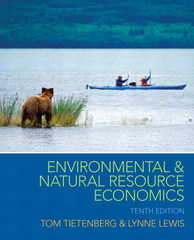Question
In Retireland, no one commutes to work, and everyone consumes a single good (the meal) which can be purchased by visiting the nearest vending machine.
In Retireland, no one commutes to work, and everyone consumes a single good (the "meal") which can be purchased by visiting the nearest vending machine. Everyone consumes 1 meal per day, and the vending machine only sells one meal at a time (if you want two meals, you need go back home and come back again). Alternatively, the meal can be delivered by a distant catapult, capable of flinging a meal through a food slot on the customer's roof (you can order as many as you like). The price of a delivered catapult meal is $6 and the price of a vending-machine meal is $2. The travel cost for consumers is $.50 per roundtrip mile ($0.25 per mile traveled each way). Everyone has an identical income ($600 / month), and people spend their income either on the meal or rent. Any income left after meal and travel expenses is allocable to rent, i.e. residents decide on their rent decisions using the leftover principle.
- How many miles would the market area (i.e. maximum miles to be traveled for vending) be for the vending machine?
- Now assume that everyone owns a mountain bike, which reduces the travel cost to $.25 per round-trip mile. What would the new market area be for the vending machine?
- Continue from part (b) above (everyone owns a bike still). Assume that a new vending machine replaces the old one, now allowing customers to purchase two meals at a time (meals are storable at no cost). How would that affect (if any) the market area of the vending machine?
- Continue from part (c) above, and assume that everyone eats 2 meals per day in this town, and a month is 30 days long. What would the monthly rent be for a residence located at 8 miles? How about a residence located at 20 miles away from the vending machine? (Hint: Nash equilibrium happens when everyone is indifferent about their choices).
Continue from part (d) above, now assume that half of the residents in Retireland switch from mountain bikes to road bikes (the remaining residents still uses mountain bikes, and cannot switch), which is faster and saves on travel time (reduces travel cost to $.10 per round-trip mile for road bike owners).
- How is the market area affected by the introduction of road bikes?
- If all residents follow the "leftover principle" as discussed in our lecture, where would you expect road vs
- mountain bike owners to outbid each other in terms of rent?
- If no one had locational preferences, what would be a pareto efficient allocation for road vs mountain
- bike owners in terms of their residences?
Step by Step Solution
There are 3 Steps involved in it
Step: 1

Get Instant Access to Expert-Tailored Solutions
See step-by-step solutions with expert insights and AI powered tools for academic success
Step: 2

Step: 3

Ace Your Homework with AI
Get the answers you need in no time with our AI-driven, step-by-step assistance
Get Started


